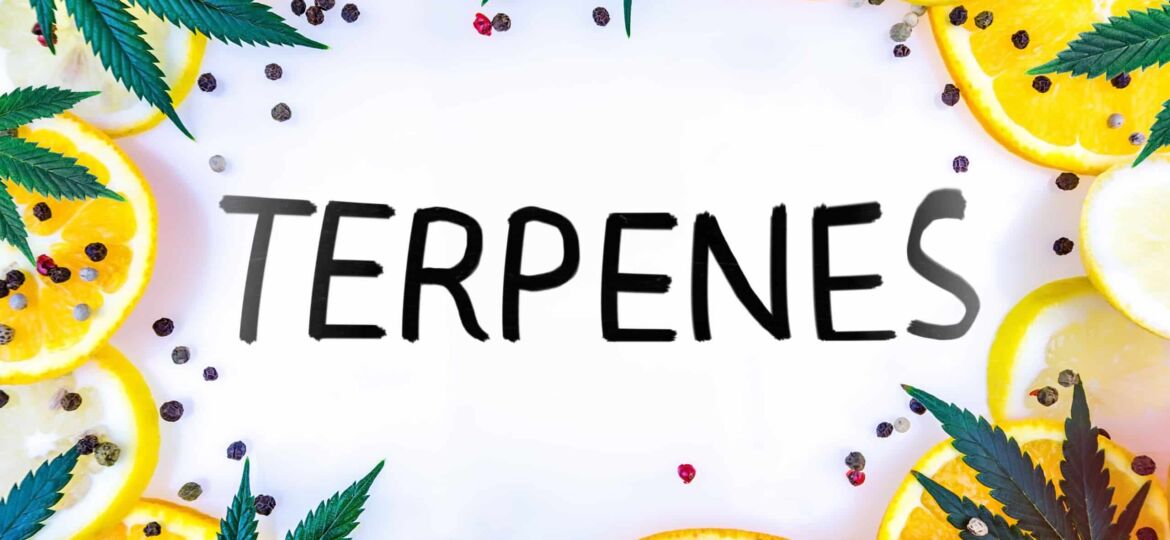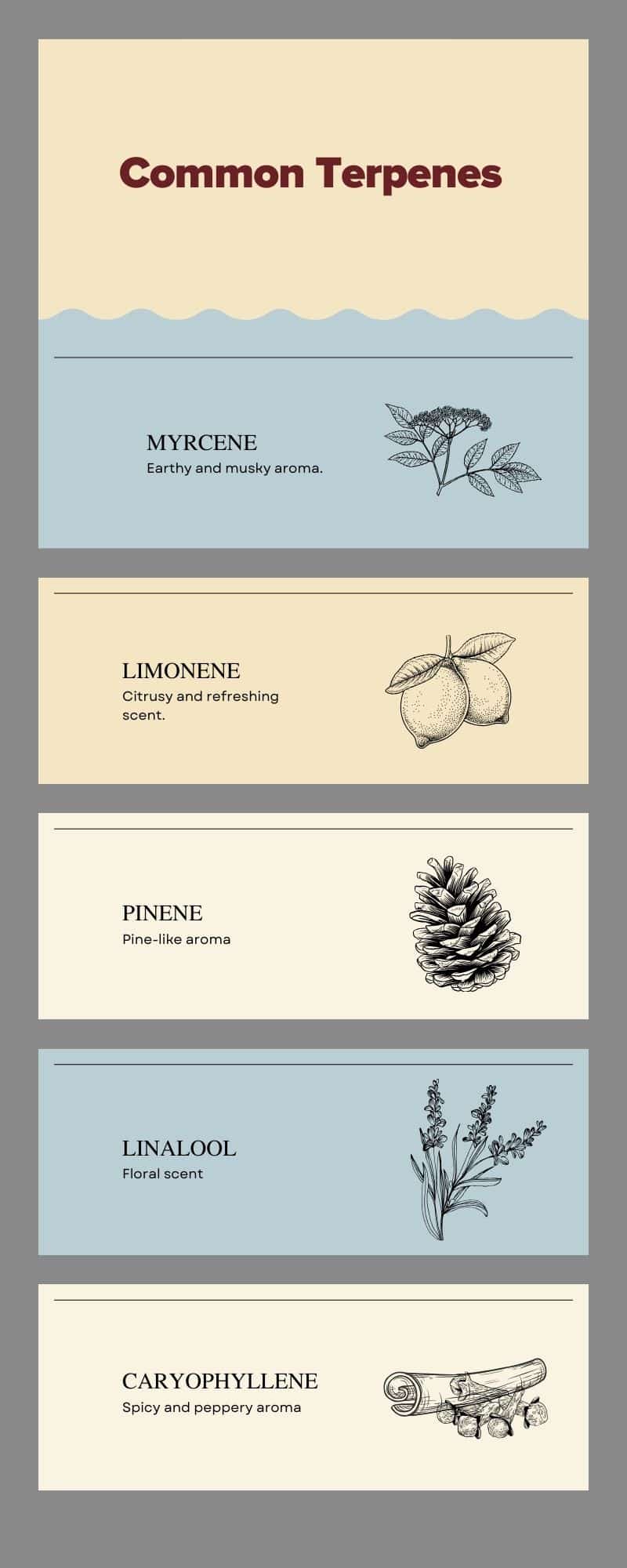
In our previous blog posts, we embarked on an exciting journey to explore cannabinoids, their origin, and their potential benefits. Now, it’s time to dive into another crucial aspect of the hemp plant: terpenes. These aromatic compounds, found abundantly in hemp, play a significant role in the overall experience and potential therapeutic effects of this remarkable botanical wonder. In this blog post, we will unravel the world of terpenes in hemp, understanding their diverse aromas, potential benefits, and most importantly, how they synergize with cannabinoids.
Terpenes – The Aromas of Nature
Terpenes are a diverse group of organic compounds that are naturally occurring in many plants, including hemp, cannabis, fruits, vegetables, herbs, flowers, and various other botanicals. They play a significant role in giving plants their characteristic scents and flavors. Terpenes hold a wide range of purposes in nature. For example, in plants, terpenes can act as natural repellents to deter herbivores or attract pollinators like bees and butterflies. They also contribute to the overall health and well-being of the plant by providing protection against pathogens and environmental stressors.
In hemp, these aromatic compounds are produced in the same glandular trichomes where cannabinoids, such as CBD, are synthesized. The hemp plant contains an extensive array of terpenes, and each strain can have a unique terpene profile. Some common terpenes include:
- MYRCENE – Known for its earthy and musky aroma, myrcene is one of the most abundant terpenes in hemp. It may also have potential sedative and relaxing properties.
- LIMONENE – With a citrusy and refreshing scent, limonene is not only found in hemp but also in various citrus fruits. It may offer potential mood-enhancing effects and is often associated with an uplifted mood.
- PINENE – As the name suggests, pinene has a pine-like aroma and is also found in coniferous trees. It may have potential anti-inflammatory and bronchodilator properties.
- LINALOOL – Linalool is known for its floral scent and is found in lavender and other flowers. It may have potential relaxing and calming effects.
- CARYOPHYLLENE – Caryophyllene has a spicy and peppery aroma and is also found in black pepper and cloves. It is the only terpene known to directly interact with the body’s endocannabinoid system and may have potential anti-inflammatory effects.
The Entourage Effect
Terpenes and cannabinoids work together in what is known as the “entourage effect.” This phenomenon describes the synergistic interaction between different compounds in the hemp plant, enhancing their potential effects.
Terpenes not only contribute to the aroma and flavor of hemp but also modulate the effects of cannabinoids like CBD. For example, myrcene’s sedative properties may complement the relaxing effects of CBD, potentially contributing to a more calming experience. Limonene’s mood-enhancing properties could complement the potential mood-balancing effects of certain cannabinoids.
Terpenes and the Endocannabinoid System
The entourage effect is intricately connected to the endocannabinoid system (ECS) in humans. Both cannabinoids and terpenes interact with the ECS, influencing its signaling and maintaining overall balance within the body.
The ECS in humans plays a crucial role in regulating various physiological processes, such as mood, pain perception, and immune response. When we consume hemp products containing cannabinoids and terpenes, they interact with the ECS to potentially provide various effects. Understanding this interplay enhances our appreciation of the diverse properties of hemp and the potential therapeutic benefits it may offer.
As we grasp the fascinating connection between terpenes and the ECS, we set the stage for our final blog post, where we will explore the intricacies of the ECS in humans. Join us as we unravel the mysteries of how the ECS regulates physiological processes and its significance in our overall well-being.


